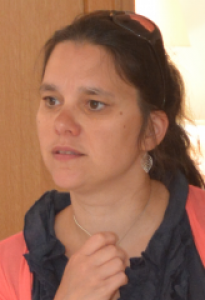By Stefanie Sinclair
[This piece originally appeared in the Bulletin of the British Association for the Study of Religion 132 (Nov 2018). You can read the full issue here. Stefanie was the recipient of the first BASR Teaching Award, and this piece celebrates her achievement.]
Creativity is in demand. As Gaspar and Mabic point out, “in the last decade creativity has become a mantra which is used by politicians, businessmen, employees, teachers, professors, students and others. Creativity is seen as a cure for a wide range of [social, economic and educational] problems” (2015, p. 598). It is valued as an important life skill, linked to increased levels of wellbeing and depth of learning. It can build resilience and help solve complex problems. Creativity has also been identified as an increasingly desirable graduate attribute that cannot easily be outsourced or replaced by machines in a labour market increasingly dominated by technology (Blessinger and Watts 2017, 3; Csikszentmihalyi 2006; Gauntlett 2011; Osmani et al. 2015; Rampersad and Patel 2014; Robinson 2011).
While there is wide-ranging agreement that higher education can play an important role in fostering creativity, there have been claims that it is not doing enough and there are “calls for a more rigorous approach to teaching creativity” in higher education (Rampersad and Patel 2014, 1). However, there are many different views on what creativity actually is and how its development can be best supported. Studies have, for example, found that academic staff and students in higher education often have different understandings of the concept of creativity. When interviewing academic staff from a range of subject disciplines at Liverpool John Moores University and University College London (UCL), Edwards et al. (2006) found that the academics they interviewed tended to associate creativity with originality, with being imaginative, with exploring or ‘adventuring’ for the purpose of discovery, with synthesis and making sense of complexity and with communication. A parallel study of students’ perception of creativity, on the other hand, found that students tended to associate creativity with freedom from routine and from the need to justify oneself, with expression of imagination, with independence, risk and sometimes superficiality. Students also typically described creativity as something personal and infectious (Oliver et al. 2006). These differences highlight the elusive and complex nature of this concept (Kleinman 2008, 209). Notions of creativity range from understanding it as an elite enterprise that is reserved for the talented and gifted few, to the increasingly influential understanding of creativity as a powerful collaborative process that can and should be harnessed in everyone (Rampersad and Patel 2014, 1; Robinson 2011). I find the latter particularly convincing.
However, in an environment determined by league tables, funding cuts, stifling levels of bureaucracy and the looming pressure of the REF and TEF, where students are increasingly encouraged to approach education as customers purchasing qualifications, it can be very challenging to inject creativity into the curriculum and adopt a greater focus on teaching and learning as a collaborative process of discovery and growth. So what can we do to address this? Csikszentmihalyi argues that “if one wishes to inject creativity in the educational system, the first step might be to help students find out what they truly love, and help them immerse themselves in the domain” (2006, xix). He contends that to support this process, it is important that teachers model the joy of learning and the passion for their subject discipline themselves. As Kleinman concludes, “academics need to be perceived and involved as agents in their own and their students creativity rather than as objects of, or more pertinently, deliverers of a particular ‘creativity agenda’ “(2008, 216). As part of the Open University’s Faculty of Arts and Social Sciences teaching scholarship seminar series on ‘Creativity and criticality in online learning’ colleagues got together last summer to talk to each other about their passion for their respective subject areas – and some filmed each other talking about this on their smart phones. In the midst of stressful deadlines and piles of paperwork, many colleagues commented on how refreshing and energising they found it to remind themselves and each other of their deep passion for their subject areas and for teaching and research. In the context of the many pressures academics are facing, it is important not to lose sight of why we’re in ‘it’ in the first place, and it is important for our students to see this, too.

